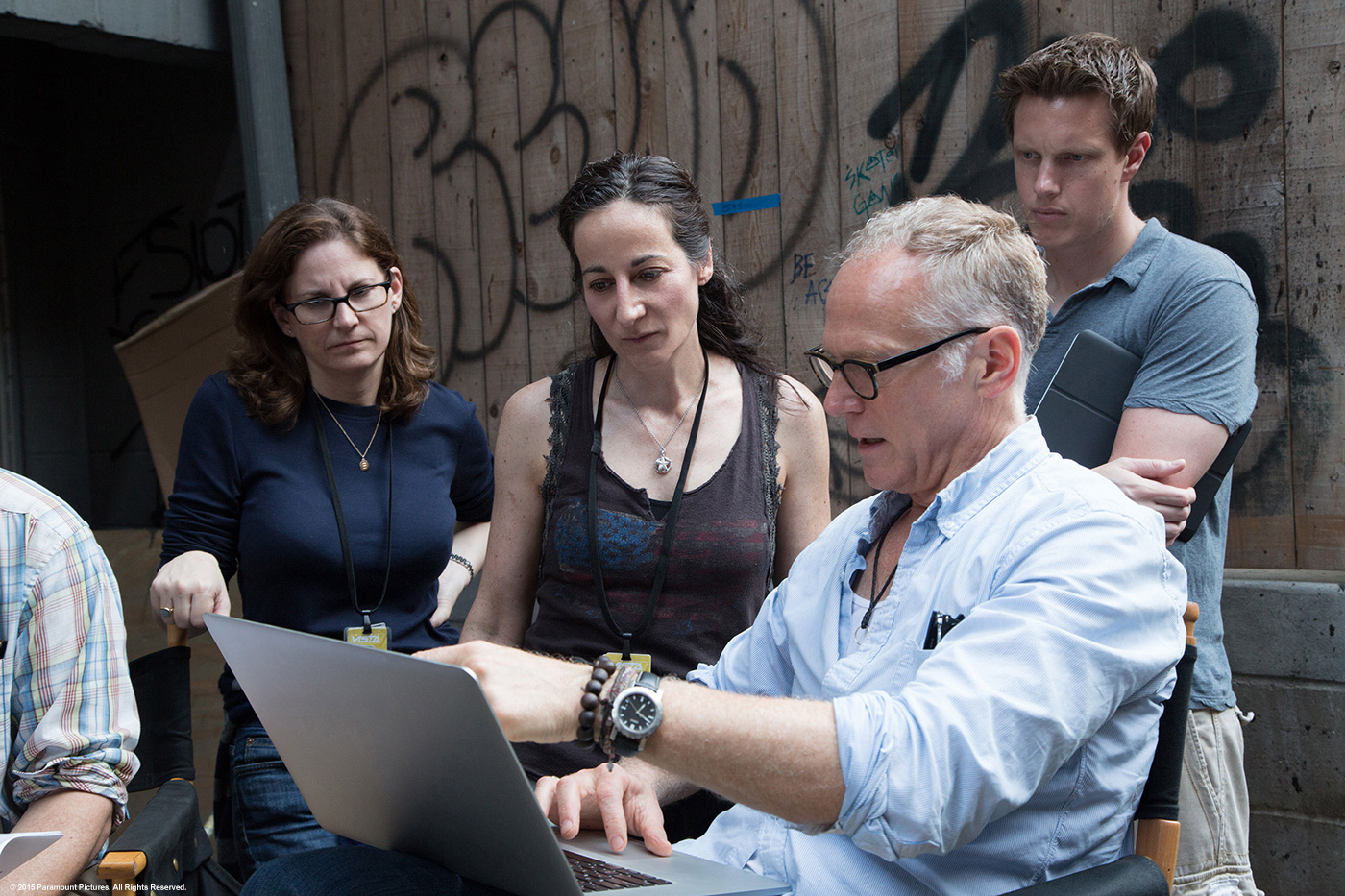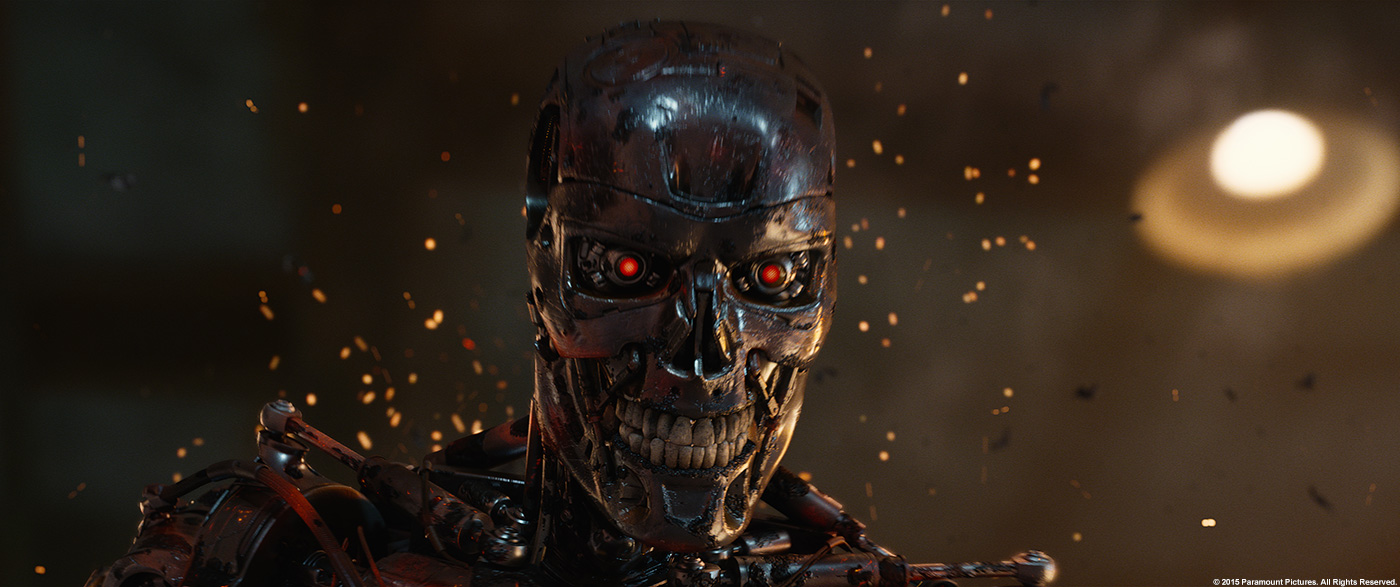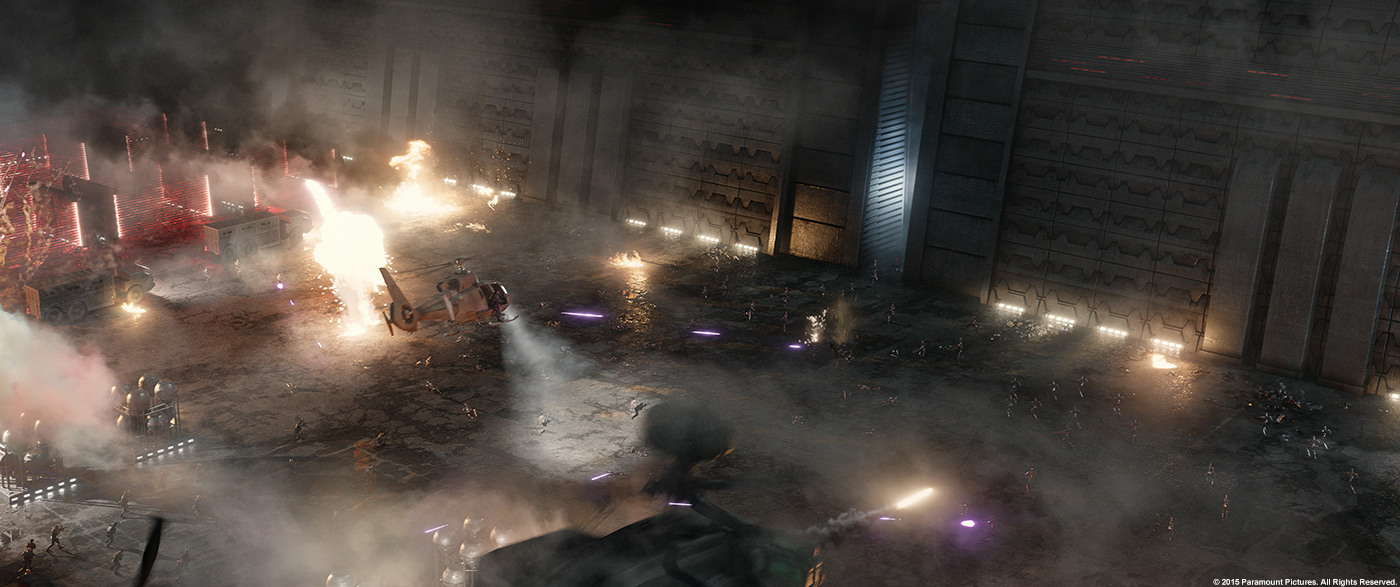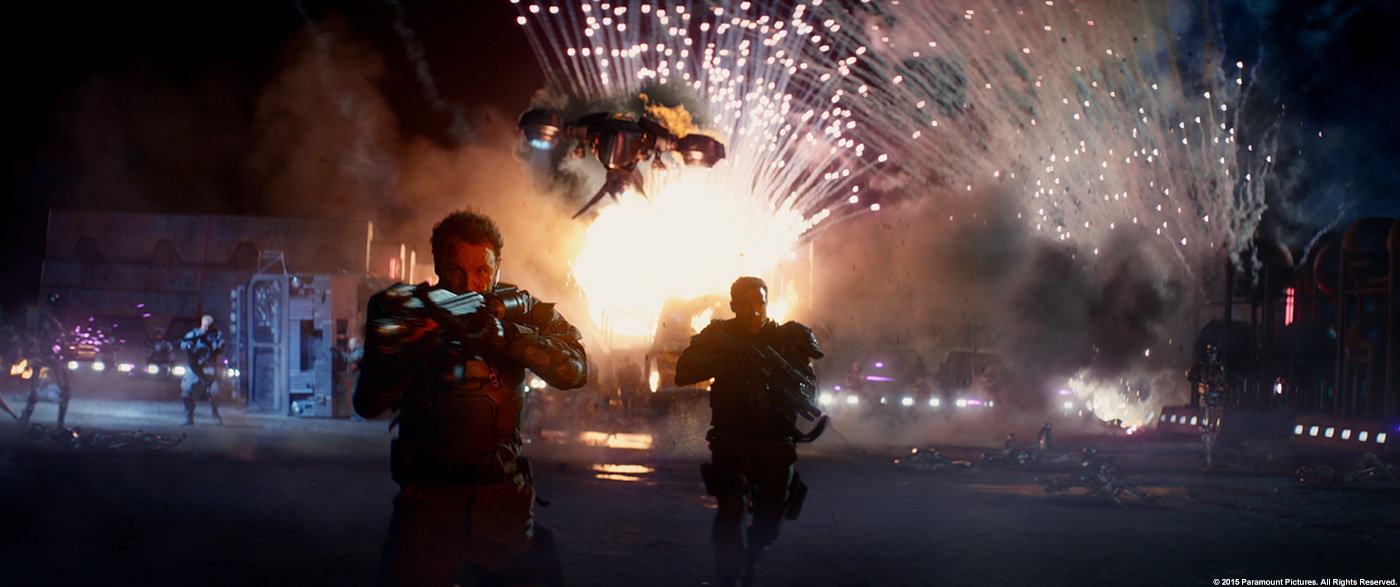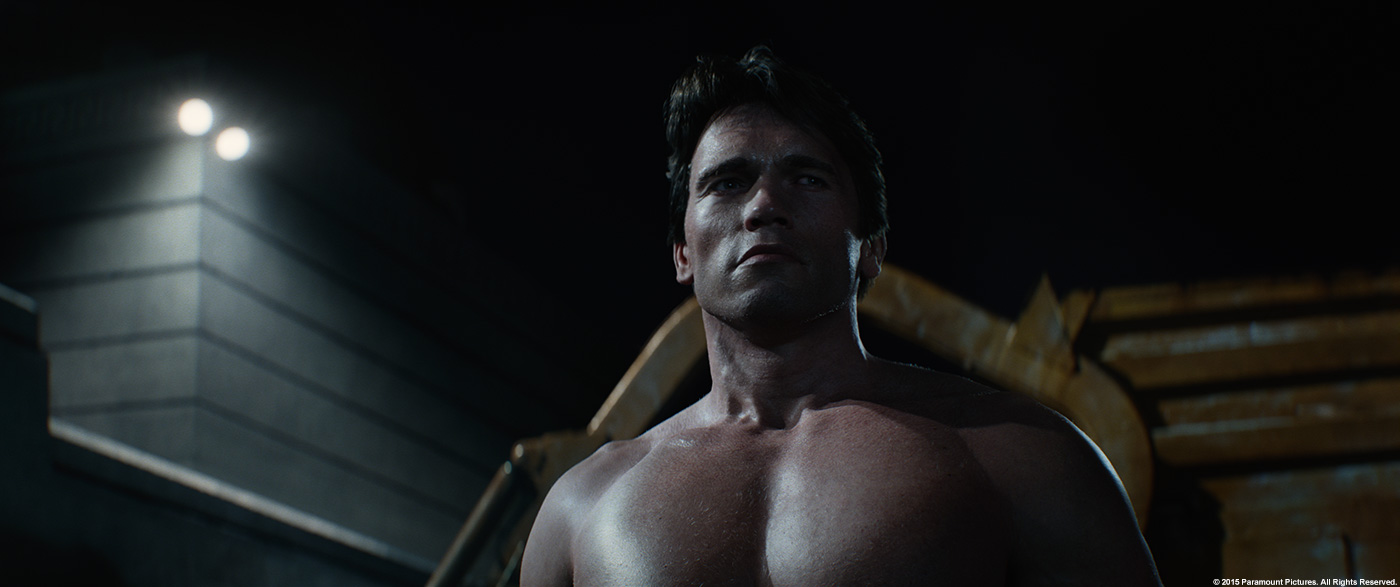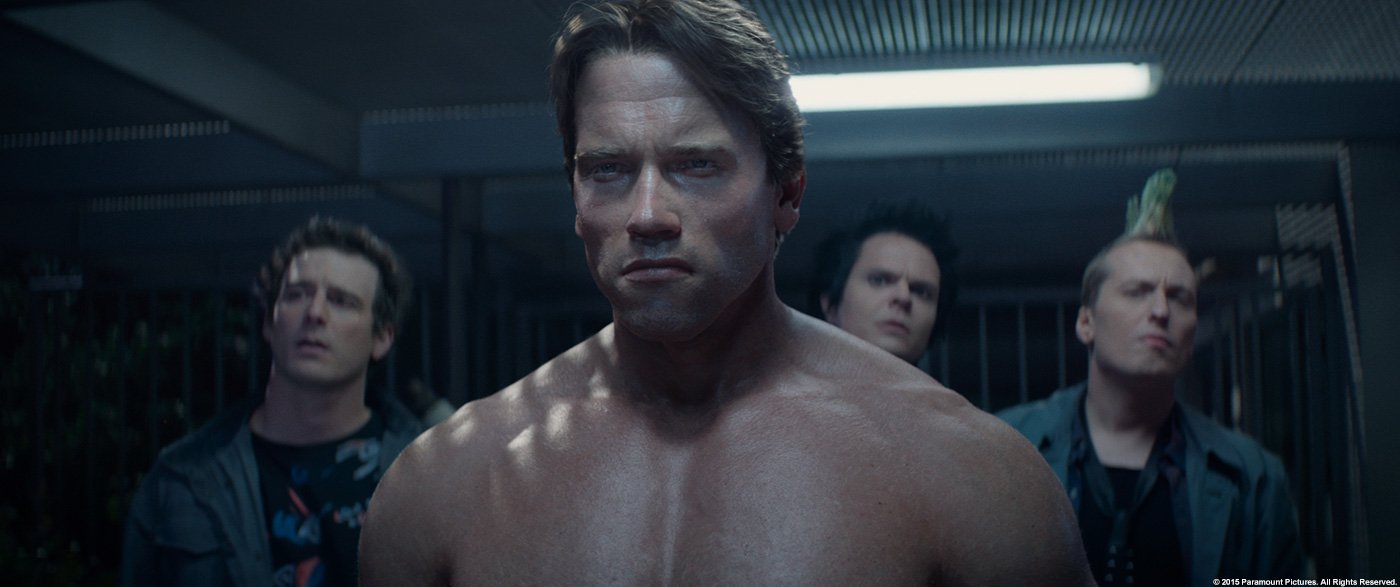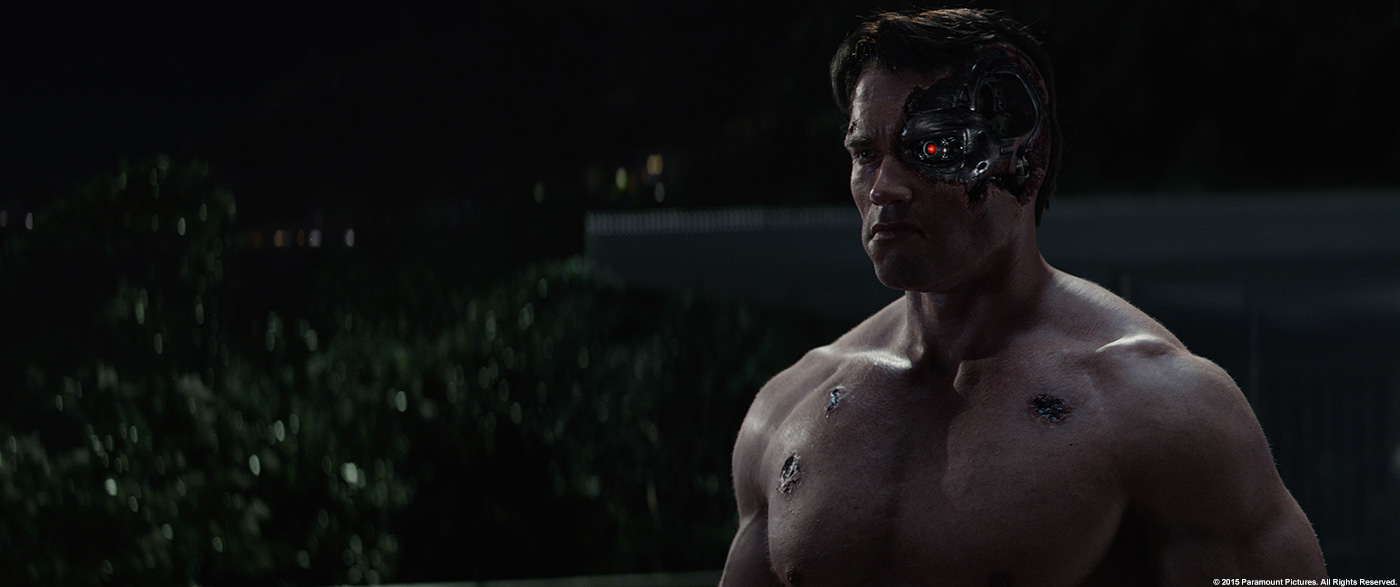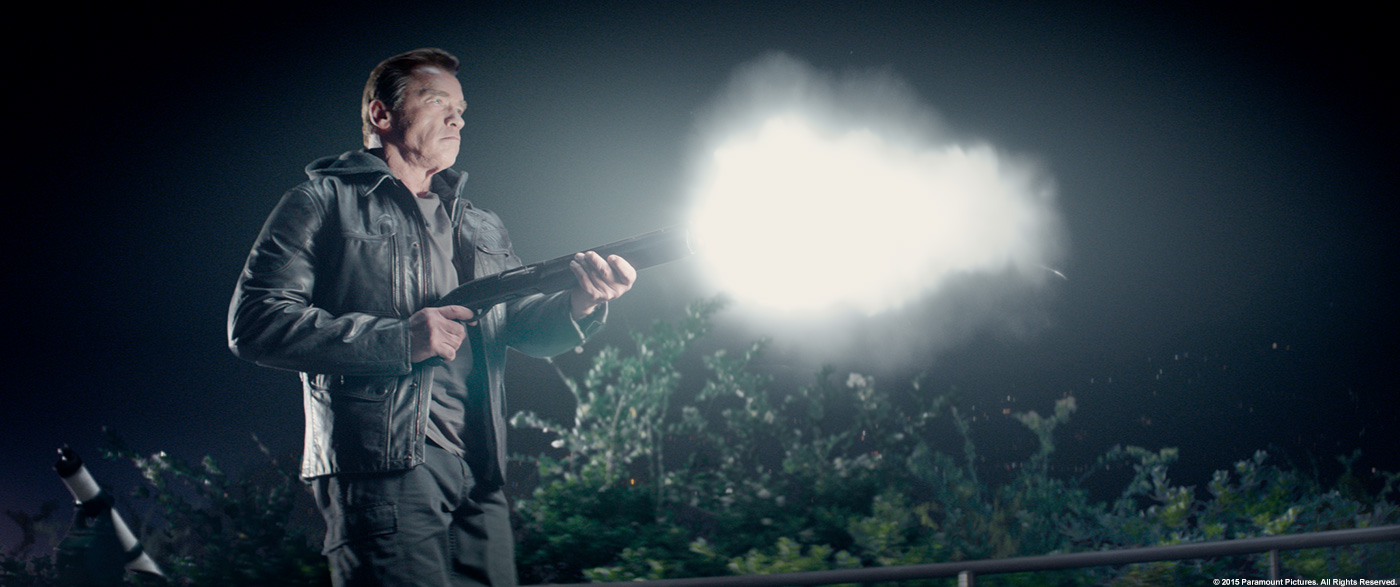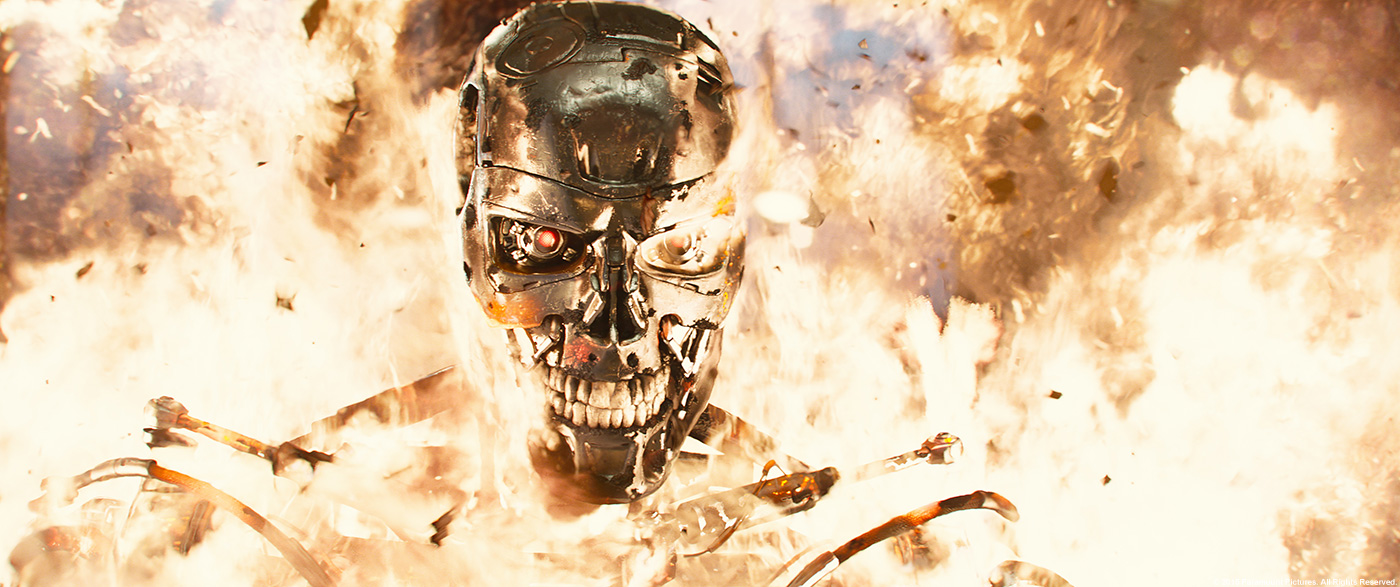Sheldon Stopsack began his career in the visual effects in 2002 at Ambient Entertainment. He joined MPC in 2007 and worked on films such as CLASH OF THE TITANS, PROMETHEUS, SKYFALL or X-MEN: DAYS OF FUTURE PAST.
What is your background?
My original background is graphic design. Which I studied and finished with a master degree at the University of Applied Science and Arts in Hannover. During that time I was focusing on motion graphics and moving pictures in general. Which is how I got introduced to the world of computer graphics and VFX.
How did you and MPC got involved on this show?
I first heard about this project when I had a conversation with MPCs VFX Supervisor Gary Brozenich. Both of us had worked in the past with Shari Hanson, who was the VFX Producer for TERMINATOR GENISYS. She approached Gary and MPC about the potential of us getting involved in the show.
How was the collaboration with director Alan Taylor and VFX Supervisor Janek Sirrs?
The collaboration with our clients was great. Throughout the whole project it was a very film making orientated approach. Its not unusual for VFX productions to be considered as what I would call the “icing on the cake”. Where on TERMINATOR GENISYS it was pretty clear from the beginning that the VFX had contribute to make this a better picture – visually as well as from a story point of view. Throughout the process we had a close collaboration with Shari Hanson and Janek Sirrs. As our production progressed further, we were able to interact more directly with Alan Taylor and the Producers of the movie. A lot of creative discussion took place about how the VFX could help the bigger picture of the movie. And how sequence we were involved in could be improved. Those discussion ranged from small details within individual shots to cut changes and the potential of creating new shots to help the story.
What was his approach about the visual effects?
The general approach felt very film orientated rather than being hung up too much on the technical side of VFX. Of course the technical side was (and always is) important when doing computer graphics. But the essential target for each of our steps was to achieve the perfect image as it could have been captured in camera. This was the case for all of our work. Whether its was the Arnold character or the creation of the battle field for the LAX Workcamp invasion.
What was the work done by MPC?
MPC’s main work was based around the 2029 timeline and 1984 Griffith Park Observatory fight. We were tasked with creating the T-800 ‘young Arnold’ digital double, T-800 endoskeletons, WorkCamp war FX, various futuristic vehicles, environments and set extensions.
Can you describe one of your typical day during the shooting and the post?
The principal photography was covered for most parts by Gary Brozenich who was on set in the early stages. For the photography around the recreation of the young Arnold character we had our Head of Rigging Tom Reed on set. It was very important for us to ensure that we would get the best coverage for this shoot. Let it be the acquisition of texture photography, set measurements, HDRI capture, etc. Knowing what we were up against in the post process, we had to make sure that we covered our basis. I joined on set at a later time for additional photography for the PitFight sequence. VFX was always considered and respected on set. The whole crew was incredible helpful when it came to provide us with whatever we needed. The main bulk of my work started when we got to the actual post period. A typical day for me would be reviewing dailies and discuss strategies with our artist at MPC. Commonly in the evening we had regular calls with our clients to present our work, take their feedback and than communicate this back to the relevant departments and people.
How did you approach the Future War sequence?
The LAX Workcamp was the second largest batch of our work. It required the creation of the Guerilla invasion of a Post Apocalyptic WorkCamp where machines held humans captive. The sequence itself involved an action fuelled battle where Soldiers fight various different type of Machines. The challenge started with the design of the camp itself. We had early concept work that was done by production which showed wide aerials of the remainders of LAX. Within that area of LAX the machines placed an enclosed camp with a massive hangar building which was the housing for the TDC (Time Displacement Chamber).
A small portion of the Workcamp was a practical build and shot in camera. Parts of the principal photography also involved some practical effects such atmospherics and explosions. This can be a good and a bad thing at the same time. But in the case of TERMINATOR GENISYS it worked in our favor as it gave us a clear visual lead for any additional fx work. It also helped to set the tone for the full CG shots we created in addition. In the end it was a combination of SFX and VFX. We tried to keep what was there and dressed up further to make the sequence a worthy event. The whole sequence had to feel like a very violent and dramatic invasion. It had to feel like a dangerous place for our heroes.
The approach of constructing the WorkCamp was very modular. For example, individual wall pieces could be used to assemble a whole camp. Dressed up with various other modules like FuelCells, Towers and Turret Guns. The Hangar building itself was also orientated on the design of the practical wall modules. Everything had to have the appearance of machines could have build these items to stack them together in a rather rational fashion. Its a very practical design -?placed in a highly destructed environment of collapsed LAX structure. It was important to recognise the location as LAX. So we tried to maintain the recognisability and appearance of iconic landmarks such as the LAX tower and Theme Building / Encounter restaurant.
The Future War involved many T800 endoskeletons. Can you tell us about their creation?
The Endo robots are obviously one of the most iconic items people remember when thinking of the Terminator franchise. Like most of the designs on TERMINATOR GENISYS the approach was to stay true to the original movie. That meant our design was close to what people used to the see in original Terminator. A life sized practical build of the Endo skeletons was build and used on set as stand it. This puppet was done to a very high level which helped us a lot.
The Hunter Killers are back too. How did you design and created them?
The HK design is strongly orientated on the HKs as seen in the original Terminator movie. Production provided us with some great concept work that was done up front. This gave us a great starting point for the model and texture build. But with most concept work, it only gives you guide. For the HKs we had to consider how they would be used and seen in the future war sequence. As we progressed with the model build, it became clear that we had to make certain decisions that would have an affect on the overall design.
A new robot comes in play, the Spider Tank. What was the main challenge with this robot?
The Spider Tank was a great asset to work on. The conceptual ideas was not entirely new to the Terminator universe. Original sketches and ideas were already created during the making of TERMINATOR 2. I believe it was even used in comic and game adaptation. However, it was never seen in any of the Terminator movies, so it was a great task for us to bring these to life on the big screen. Some of the HK design requirements were actually triggered by the introduction of the Spider Tank. The requirements was that the HKs needed to be able to act as carriers of the Spider Tanks. Spider Tanks would mount within the belly area. When it came to the future war sequence they could be released and dropped off in the middle of the action. We explored various options on how to “fold up” the Spider Tank and played with various ideas on how to fit them in the main body of the HK. With both machines having a significant size we wanted to avoid the sense of the HK being an empty hull once the SpiderTank got deployed. The HK ended up being slightly increased in size to allow for a good fit. On the other hand we ended up with a folded pose for Spider Tank that allowed us to fit it fairly snug onto the underside of the HK while still exposing some its weapon. Almost as it could have used its own set of weapons while still being mounted.
Can you tell us more about its rigging and its shaders?
The rigging was fairly straight forward considering the complexity of the build. Even though the structural nature of the Spider Tank is fairly complex, our rigging department had a great handle on it at all times. The more challenging part was to figure out the mechanical behaviour in consideration of the required characteristics. It was an on going process that required us to make certain design changes at a later time to accommodate our needs for the actual shot work.
For the shading (HK and Spider Tank) we followed the direction of what was seen in the concept work. Just like the HKs in the original Terminator movie, the material finish required to be rather slick with a strong sense of an anisotropic brushed metal look. We used vector maps to determine the direction of the anisotropic flow. Once we had that we used this vector to calculate brushed metal maps which were used for displacement / bump and certain specular attributes. To reach a high enough resolution we used an automated approach rather than hand painting the maps for a start. Individual curves were spawned along the surface taking the direction of the vector in account. That result got baked into a map which gave us an incredible amount of detail for the very fine brushed look. Even though this technique led to a great overall material finish, we were still left with the problem of selling the scale of the machine itself. Especially for wider shots this became a requirement. At that point we introduced another layer of imperfections – dirt, scratches, dents and chipping was added on top to ensure that we felt the scale of the machines and make their appearance as menacing and intimidating as possible.
How did you handle the animation for all these robots?
As mentioned before – alongside with the rig development the animation played a huge role of the character development. We spend a lot of time in pre-production to develop various walk, run and flight cycles as well as various amount of firing action. Each of the machines was supposed to have their unique characteristic. So we tried to introduce a clear language for each of them. At the same time we had to keep other aspect in mind.
Again, selling the size of each machine was important. That meant that Spider Tanks for example never exceeded a certain speed in their movement. A machine that is 3x times the height of a human required a certain lag to sell the size of it. Doing those early test gave us a good indication for what would work in the future war sequence.
The movie confronts two Arnold in the 1984 version of LA. How did you approach this iconic sequence?
The creation of the young Arnold character was probably the biggest challenge for us as a company. And probably the biggest challenge I ever faced in my personal career. We obviously did digital character work in the past. With type of work you are always up against the uncanny valley. Relatively speaking it is easy to get to 90-95% mark, but to make a digital character fully believable you have to get to the 100%. Otherwise the audience will not believe you. This is difficult for normal or lets say generic digital character. But with such an iconic figure such as Arnold Schwarzenegger it becomes a whole different beast. Everyone has a very strong idea of what Arnold looks like. To sell this to the audience it is tremendously important to get every single detail right. With that task in mind, we knew we had to evaluate every single step of our character pipeline. No stone was left unturned and we ended up improving pretty much every aspect of our pipeline.
Can you explain in details about the creation of the T800 Young Arnold?
For the model build of the Arnold character we had to do a lot of research. Even though we received a scan of an original cast that was taken of Arnold Schwarzenegger in 1984, we had to explore all possible sources of material to cross reference and refine. Up until the last weeks of the project we still refined aspects of our base model. So it was an on going refinement. In addition to that we spend time until the last minute to refine shapes and correctives that contribute to the facial or body performance. Athletic as Arnold was in 1984 it was a huge task for us to achieve the complex muscle behaviour of his body. Similar goes for his facial performance. Throughout the project we started with a full set of facial blendshapes as our basis. These we based of around 80-90 FACS shapes we defined as our base requirement. this covered our basis until we had the opportunity to do a MOVA performance capture with Arnold Schwarzenegger himself. In this session we captured the same set of FACS shapes which then was used to refine what had been build until that point.
In the MOVA session we also captured the performance of specific dialogue shots we had to re-create. This gave us an basis of very subtle movements. We then animated the final performance on top of that utilising our extensive facial rig. In addition to that we build some very specific shapes for typical Arnold expression. Finishing touches were done by our TechAnim team which ran additional cloth solvers for a more realistic physic in the skin behavior – things like jiggle and gravity played a subtle but huge role.
For the general rendered appearance we also changed our approach. MPC was already in the process to switch over to a much more physical based rendering approach using the RIS method that was introduced with PRMan19. That allowed us to take advantage of a complete new shader library which we could tailor to our needs. An example would be the multi layered scattering we used for our skin shading which took in account epidermal and subdermal layers. This was a huge learning curve at first, as it meant that you couldn’t simply plug in a texture map that roughly reflects the skin tone and be done with it. Instead we had to consider how different skin layers contribute to the final appearance. But once this approach was in place, we had complete freedom to go into finer details. Specific primVar provided by the rig allowed us to control things like the bloodflow. Tension and compression altered the appearance as the character performed. Again a very subtle detail, but incredible important to get to the 100%.
How did you handle the rigging and animation?
Rigging and Animation was obviously a huge factor when bringing an iconic character to life. Just like most aspects of this project it was something that we constantly had to re-evaluate. Our animation was only done when shots came close to an end. Each downstream aspect like lighting, dynamics, or even compositing gave us a clue whether the animation was successful or not. It was a very fine line not go off character. Subtle animation changes could easily go a little too far and the whole character stopped to be believable as Arnold Schwarzenegger. To speed up the process and shorten the loop of iteration it would take, we decided to have our animation team evaluate their work in a lit and rendered context. Which meant that the animation became familiar with the lighting side of things. The fact that we adapted a fully raytraced approach made that process really easy. Animators were able to launch their own renders easily using the latest lightRigs that were worked up in lighting. Lower sample settings allowed for fast render iterations so we could always review our animation in a more close to final state. This turned out to be a massive help.
The two Arnold have several damages. How did you created these FX elements?
As part of the sequence development we had to consider various stages of damaging. Luckily it was fairly clear from the beginning what the various stages entailed so we were able to plan out variations we could use across the sequence. In total we ended up having there main variations. The main variation was used for shots that didn’t required any significant model alterations – bullet wounds and any other marks were part of our lookdev. Face and chest damage as seen later in the sequence came as build / model variations. Texture maps were shared across all three variations which also allowed us to build a single shader / lookdev setup which was used across the whole sequence.
Was there a shot or a sequence that prevented you from sleep?
The Arnold digital Character… and every shot he is in. To create a believable character is a very difficult and long process. It took us until the very last minute of delivery to things look as believable as possible. During the process of getting there it can be incredible nerve wrecking. You never fully know if the decision you made is the right one. You constantly assess and adjust. Not knowing if the next step will get you there.
How was split the work amongst the MPC offices?
MPC split the shot production across two sites. Our Montreal office took the lead. The other portion was handled by the team in London. Our Builds were mostly done in London. Which was a challenge with a character like Arnold that had to evolve in shot context which was mostly done in Montreal. We put a dedicated Arnold team together which handled the cross site aspect incredible well. The time difference even played in our favor. Any build related feedback was passed on at Montreal night so the team in London could address feedback and have things ready for us in the morning. The whole process turned into a good flow.
What do you keep from this experience?
That team work is everything. This project only worked out because of the talented people that got involved this show. Without any of the individuals involved we would not have gotten as far.
What was your feeling to be involved on the Terminator universe?
It was a great experience to work on a Terminator movie and being allowed to build a full digital version of one of the most of iconic actors and athletes of all time.
Like many of us, I’d grown up watching Arnold Schwarzenegger movies being able to contribute to this legacy was a great fun.
How long have you worked on this show?
I worked on this project a little over one year.
How many shots have you done?
MPC completed around 220 shots.
What was the size of your team?
We had around 180 artists involved in this project.
What is your next project?
I’m afraid I cant reveal that just yet.
What are the four movies that gave you the passion for cinema?
It might sounds cheesy, but I can sincerely say that TERMINATOR 1 and 2 are high up there. The other series that got me as a kid were the old BOND movies with Sean Connery and Roger Moore.
A big thanks for your time.
// WANT TO KNOW MORE?
– MPC: Dedicated page about TERMINATOR GENISYS on MPC website.
© Vincent Frei – The Art of VFX – 2015


